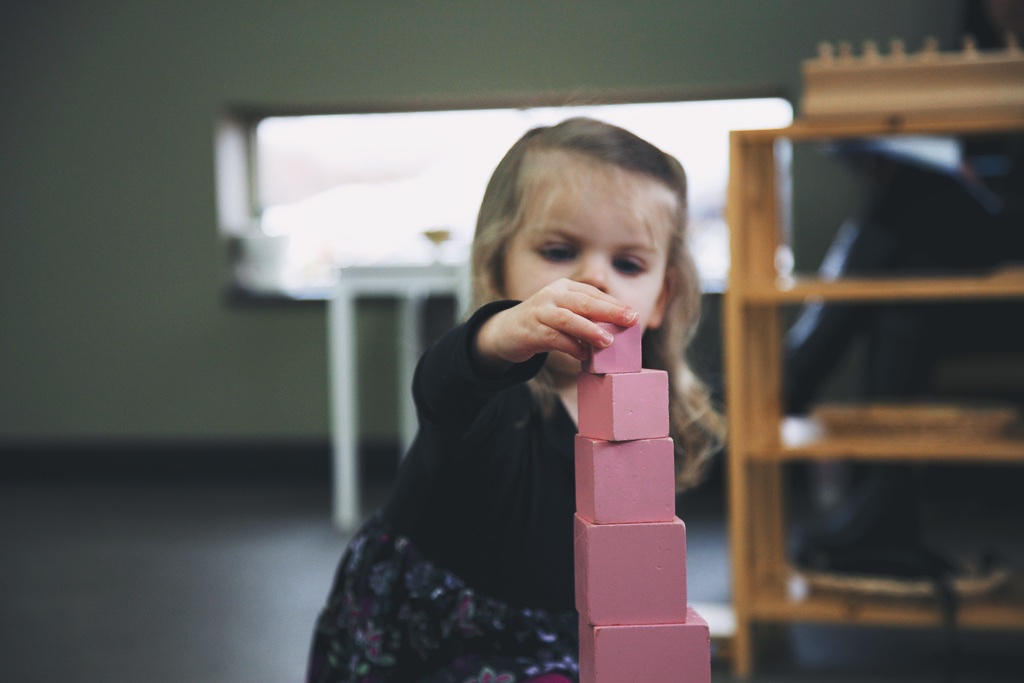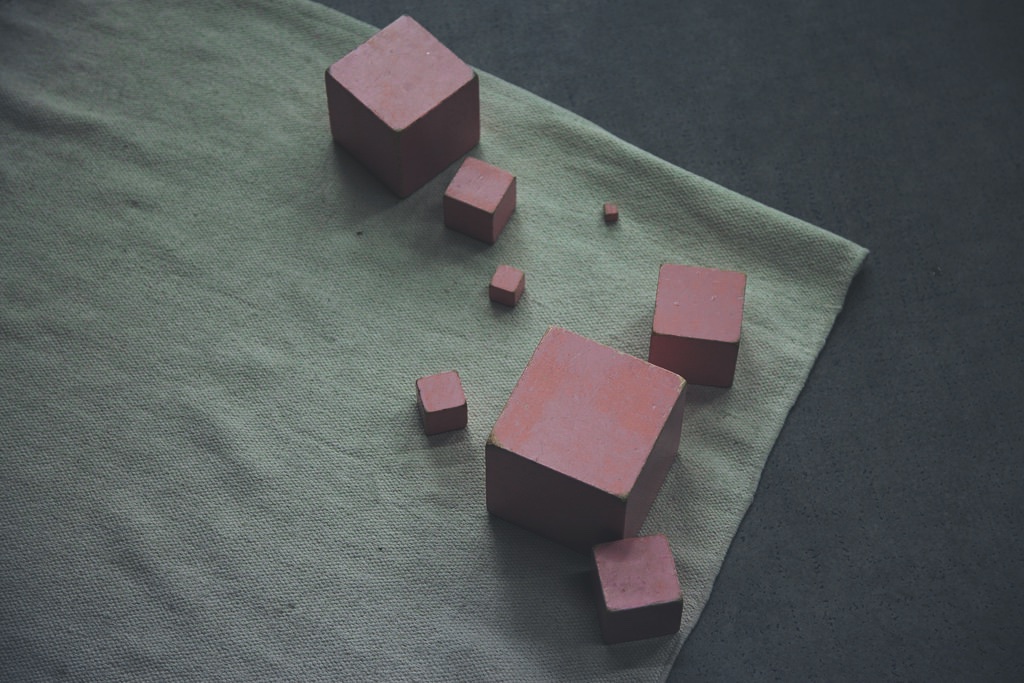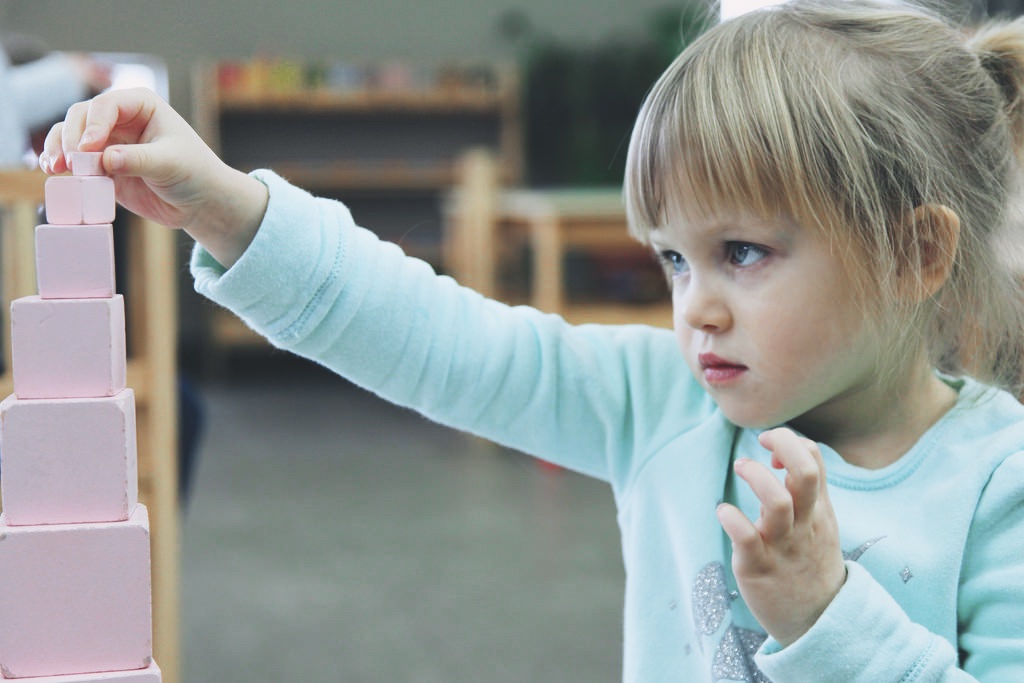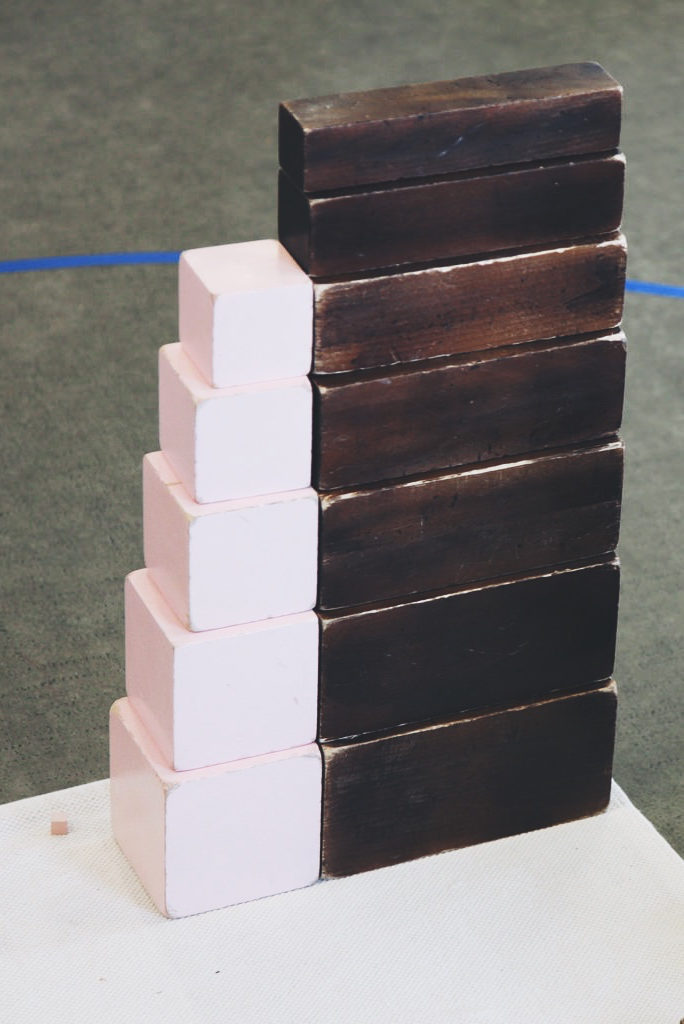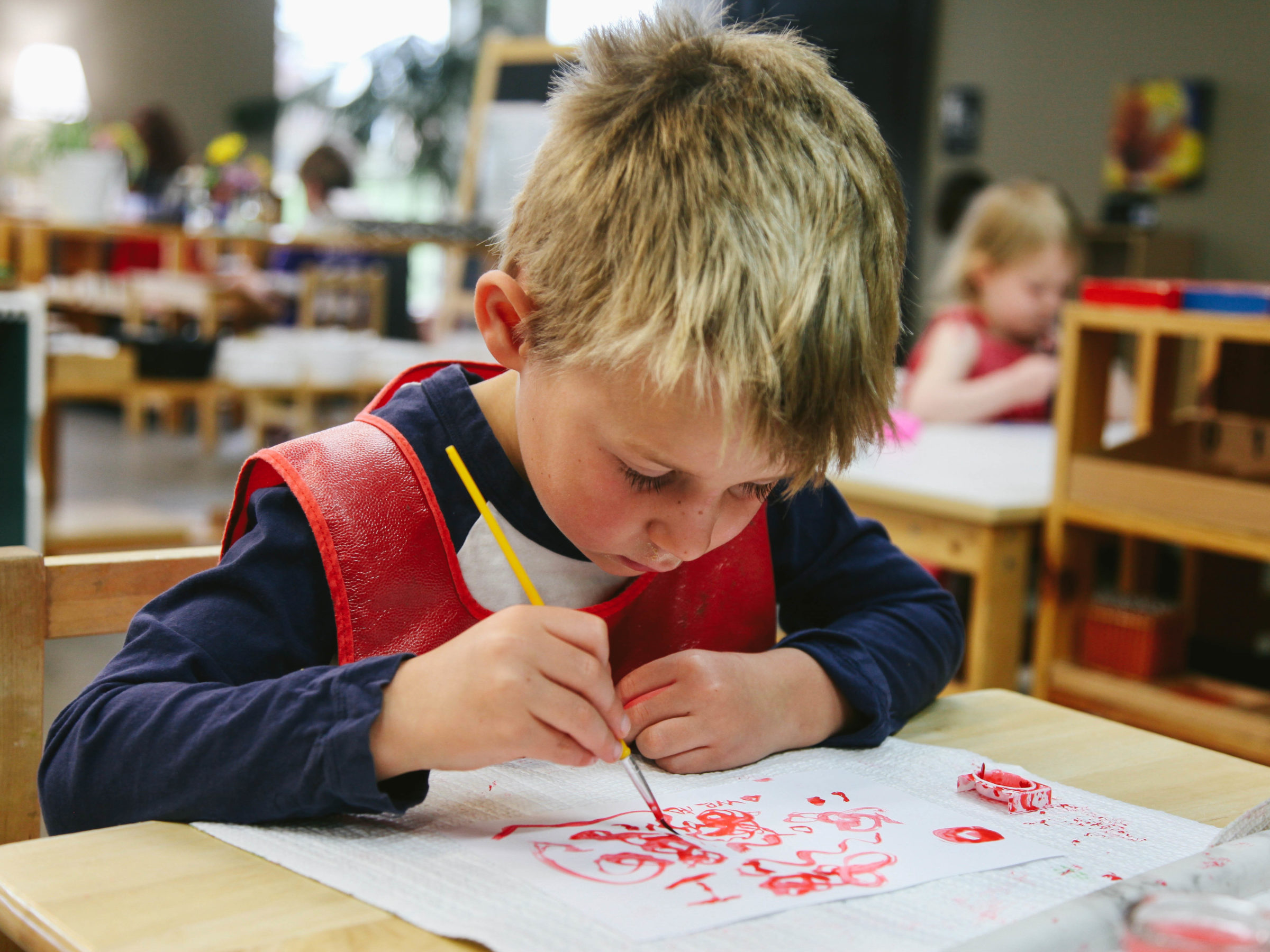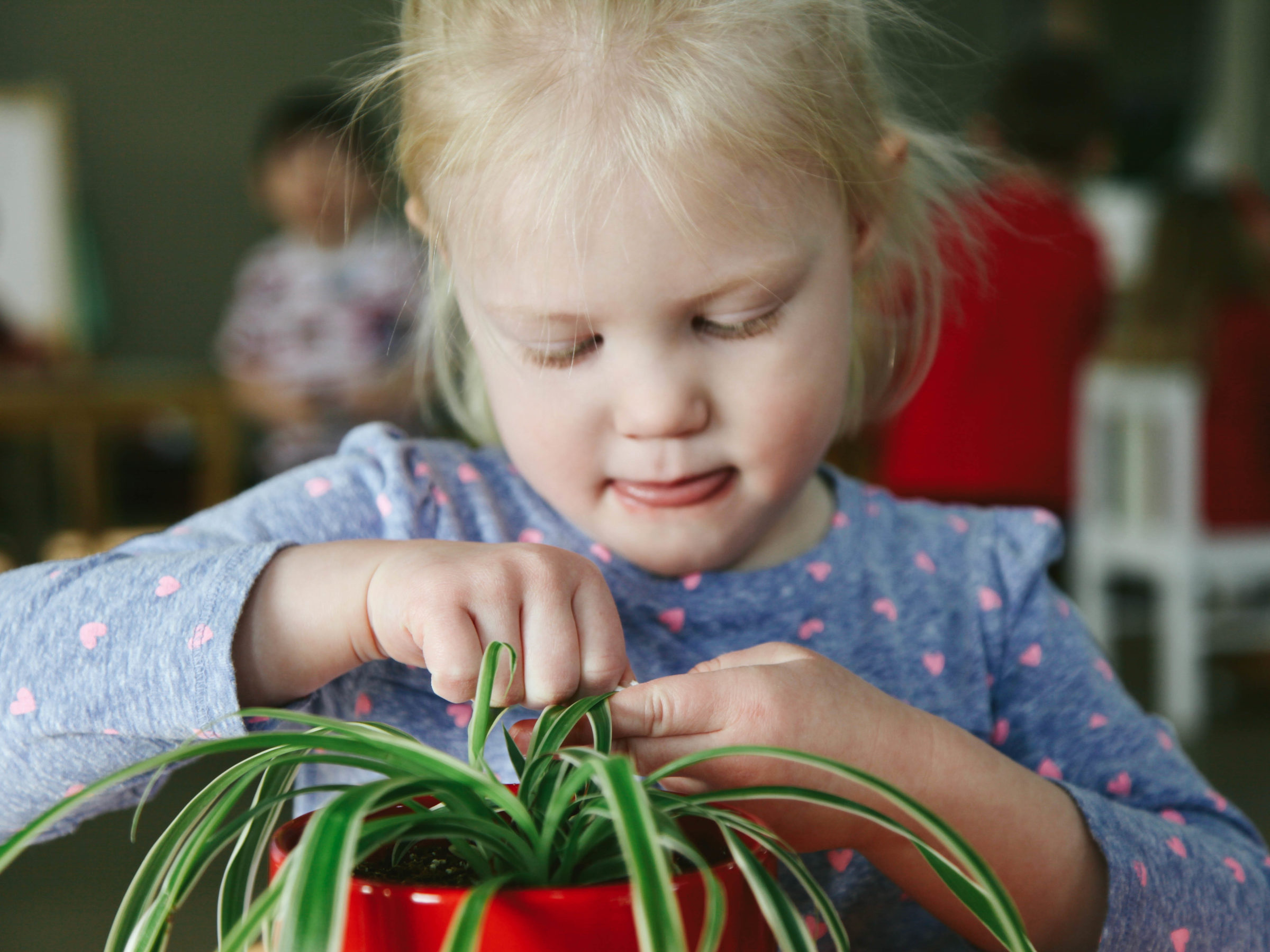The End is the Beginning
Montessori Activities
How is it possible work which easily fits on the shelves in one classroom meets the needs of children from two-and-a-half to six? We don’t have infinite storage. Most of the materials are out on the shelves all the time.
The Montessori curriculum is, in fact, quite limited. And yet, the children don’t get bored. How can this be?
The answer lies in tandem with another common question:
Isn’t that a work for the youngest children? Why is my child still working with the Pink Tower?
The work is never done. We have never absolutely exhausted the limits of any material. Every material can be worked with again and again: to practice, to gain mastery, to explore, to experiment, to use for reading, for writing, even for math.
Yes, Every Material.
Take, for example, the Pink Tower. It is an example that comes up again and again, but it’s so iconic, it’s so beautiful, and it’s a lovely opportunity to illustrate the repetitive, exploratory, never-ending nature of the Montessori materials.
The Pink Tower stands in every Montessori Classroom. It’s a pinnacle of the Sensorial Area. Anecdotally, Maria Montessori experimented with many different colors of Towers, and the Pink one is the one the children used most frequently, had the greatest success with, explored often.
This is a material first introduced to a rather young child. Not the first Sensorial presentation, as each block requires a separate trip to the shelf, ten trips in all. That’s a lot of self-control for a small person!
The first presentation is simply building the Tower, a feat in itself. It is not uncommon for a child to struggle with building the Pink Tower at their rug the first time, the first several times they take it out, but, so frequently, when they return it to the shelf, the child builds it perfectly. Every time the child has seen the Pink Tower at the shelf it has been built perfectly, beautifully; they’ve not seen it at their rug before. The child needs to figure out how to build it at their rug all by themselves.
After this mastery, which is an awesome sight to behold — the joy, the pride, the surprise on a child’s face when “I did it!” happens — there is another presentation.
The ending point is a new starting point.
The guide demonstrates to the child how the smallest cube — 1cm cubed — is the unit of measure, the incremental difference from cube to cube.
A child might begin experimenting and exploring with this material. Now that I know the right way to build it, is it possible to build the Tower any other way? Can I build it upside-down? Along the rug? In combination with the Brown Stair? Substituting pieces with any other material in the classroom?
Just when interest is waning, the guide steps in again. Let’s get out the Pink Tower. I have something new to show you.
This is small. This is large. This is smaller. This is smallest. This is larger. This is largest.
Bring me the smallest cube from the Pink Tower. Bring me a larger cube. We play games with language using all the materials, including the Pink Tower.
Time passes. This is now a writing child. She brings materials to her rug, labelling them with the Moveable Alphabet. He writes labels with a pencil, including a label for the Pink Tower.
This child reads labels. He reads a prepared label “Sensorial Area,” “The Pink Tower,” or even a slip from the guide or from his friend, “Please bring me the largest cube from the Pink Tower.” She uses the Pink Tower to help understand grammar, from the adjective — a Pink Cube (we do, in fact have a blue cube, and a yellow cube, and many other colors of cubes, for different materials. Where you find a PINK cube?) — to the preposition — the Pink Cube under the large basket — to the verb — build the Pink Tower.
This child is working with math. In the Mystery Game of Numbers, a child is asked to bring a certain number of things. Perhaps they’re supposed to bring 10 of something. Well, the Pink Tower conveniently has 10 cubes.
“The limited curriculum, the materials in a Montessori classroom, is limitless in the hands of a child.”
Later, much much later, an Elementary Montessori child might revisit the Pink Tower, that old friend. They are not exploring, building, labelling, or counting. They are proving. They use skills they’ve learned with the Bead Cabinet, another beautiful Montessori material, and their expertise with the Pink Tower, to work equations for volume.
This is just a path a child might walk with one material. Of course, every path is different, just as every child is different, but the extent of work with the Pink Tower is vast. Now, imagine a similar path for every Montessori material.
Add in the work before a child is even ready for the Pink Tower — dusting this material, observing a friend work with this material.
Suddenly, the work on the shelves in endless. The limited curriculum, the materials in a Montessori classroom, is limitless in the hands of a child.
Written by:
Charlotte Snyder
